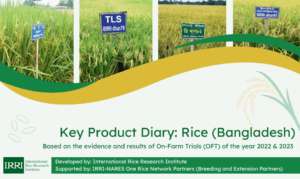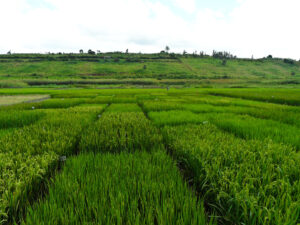The 2010 study examined the decreasing grain yield of IR8, which was the first modern rice variety of the Green Revolution, and provides strong justification for continuous maintenance breeding efforts to preserve rice yield potential.

.
The Green Revolution was initiated by the introduction of modern high-yielding rice and wheat varieties in the 1960s. In recent years, however, there are signs of stagnating yields in major rice producing areas of Asia, which suggests a lack of genetic gain in yield potential in rice improvement programs.
We examined the grain yield of IR8, which was the first modern rice variety of the Green Revolution, and found that it has decreased by 15% compared to levels it achieved in the 1960s.
To determine if this yield difference was due to genetic changes in IR8 seed through repeated cycles of planting, or to the lack of adaptation to changing environmental conditions, we compared IR8 stored in a gene bank for 30 years with continuously grown IR8 in both field and pot experiments. In the field experiments,
IR8 was also compared with recently developed varieties in yield performance. Plants from both seed sources had identical agronomic and morpho-physiological characteristics. The yield of IR8 from both seed sources were 15% less than the yields of recently developed varieties.
These findings suggest that the low yield of IR8 resulted from the lack of adaptation to changed environmental conditions, and maintenance breeding plays a critical role in improving adaptation of newly developed varieties to environmental changes that have a negative impact on older varieties. Our study provides strong justification for continuous maintenance breeding efforts to preserve rice yield potential through improved resistance to rapidly evolving biotic and abiotic stresses.
Read the study:
Peng S, Huang J, Cassman KG, Laza RC, Visperas RM, Khush GS. The importance of maintenance breeding: A case study of the first miracle rice variety-IR8. Field Crops Res. 2010; 119(2–3): 342–347.







A very nice article.This is the need of the hour as far as quality is concerned. I request to have the full article